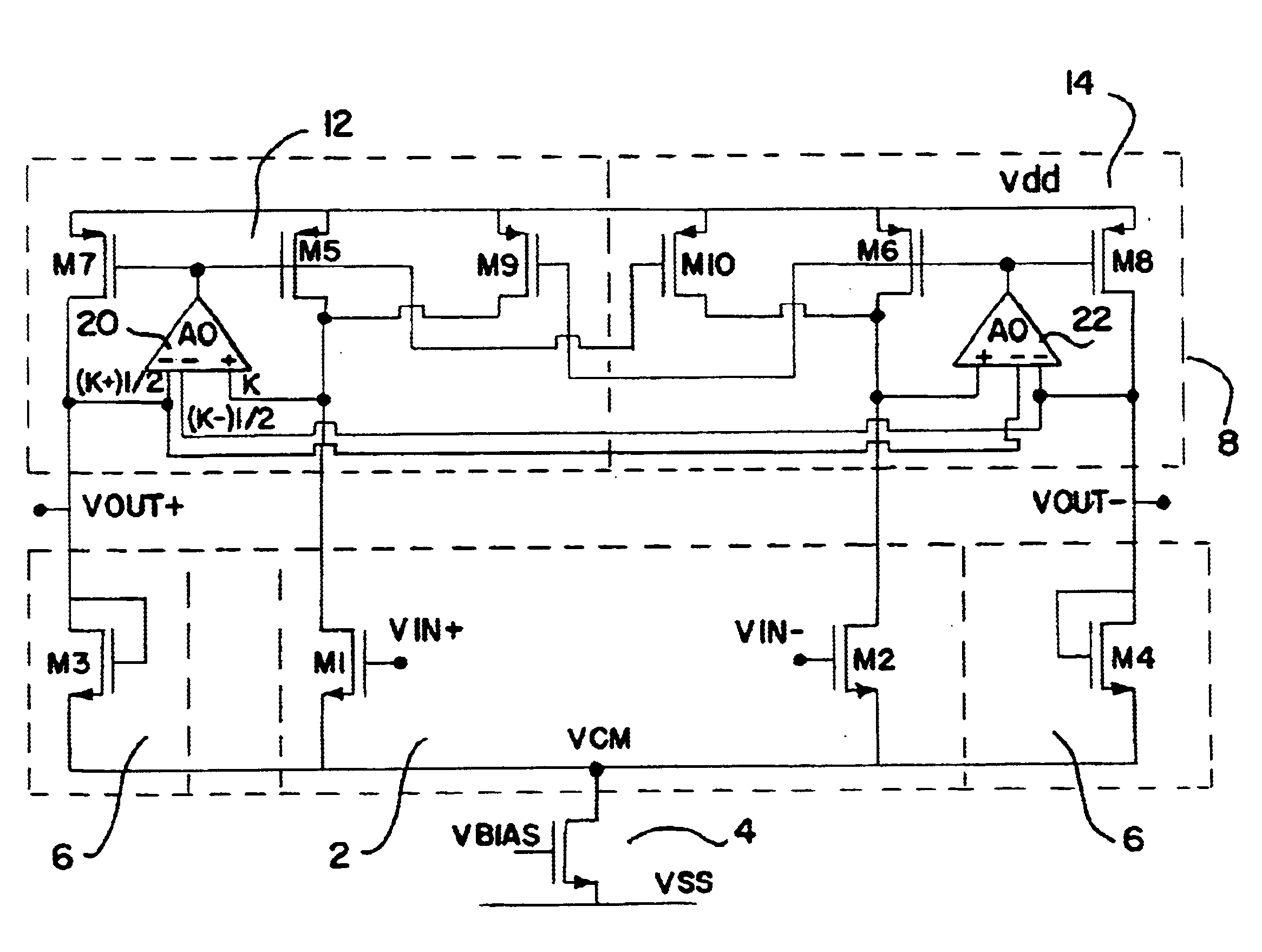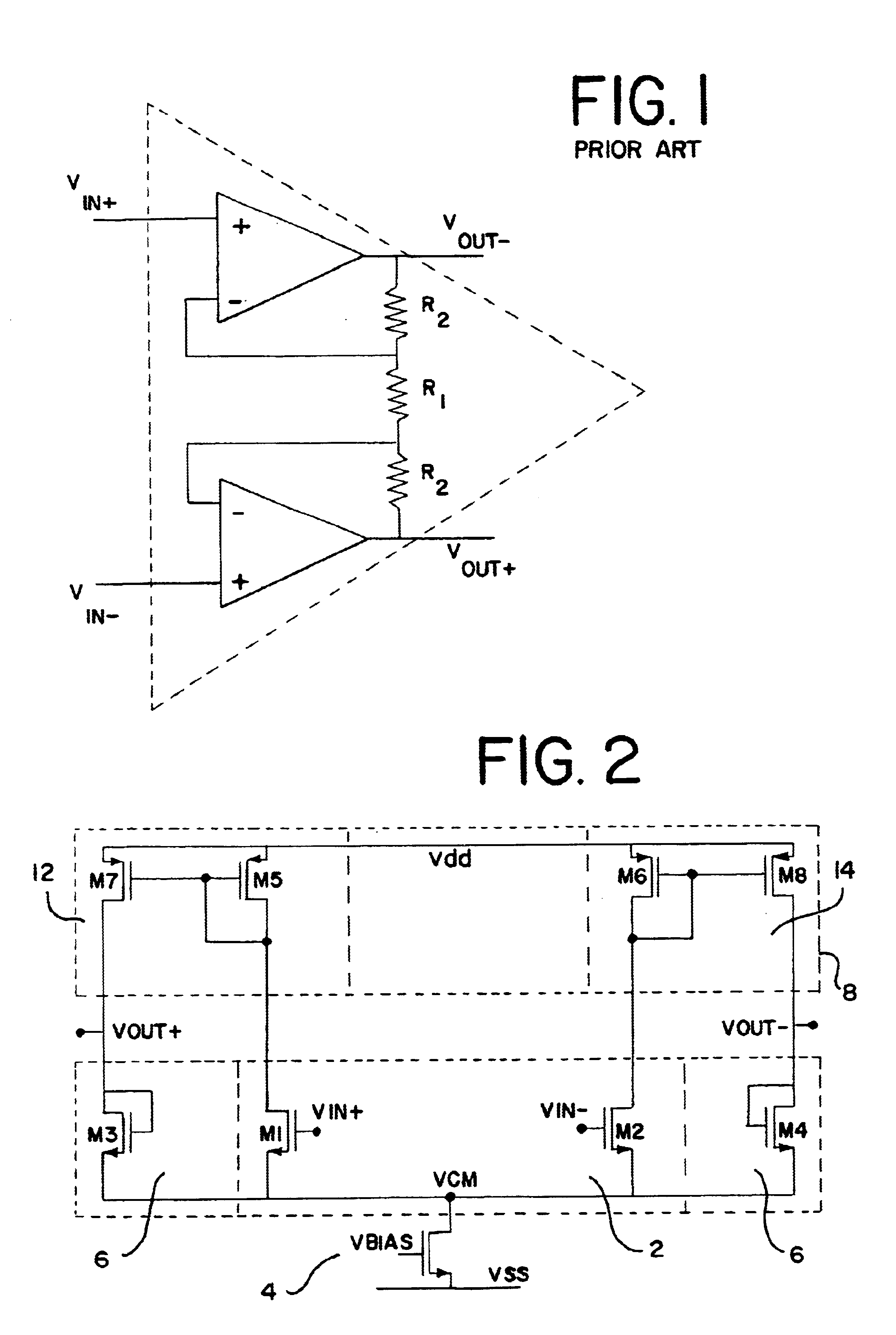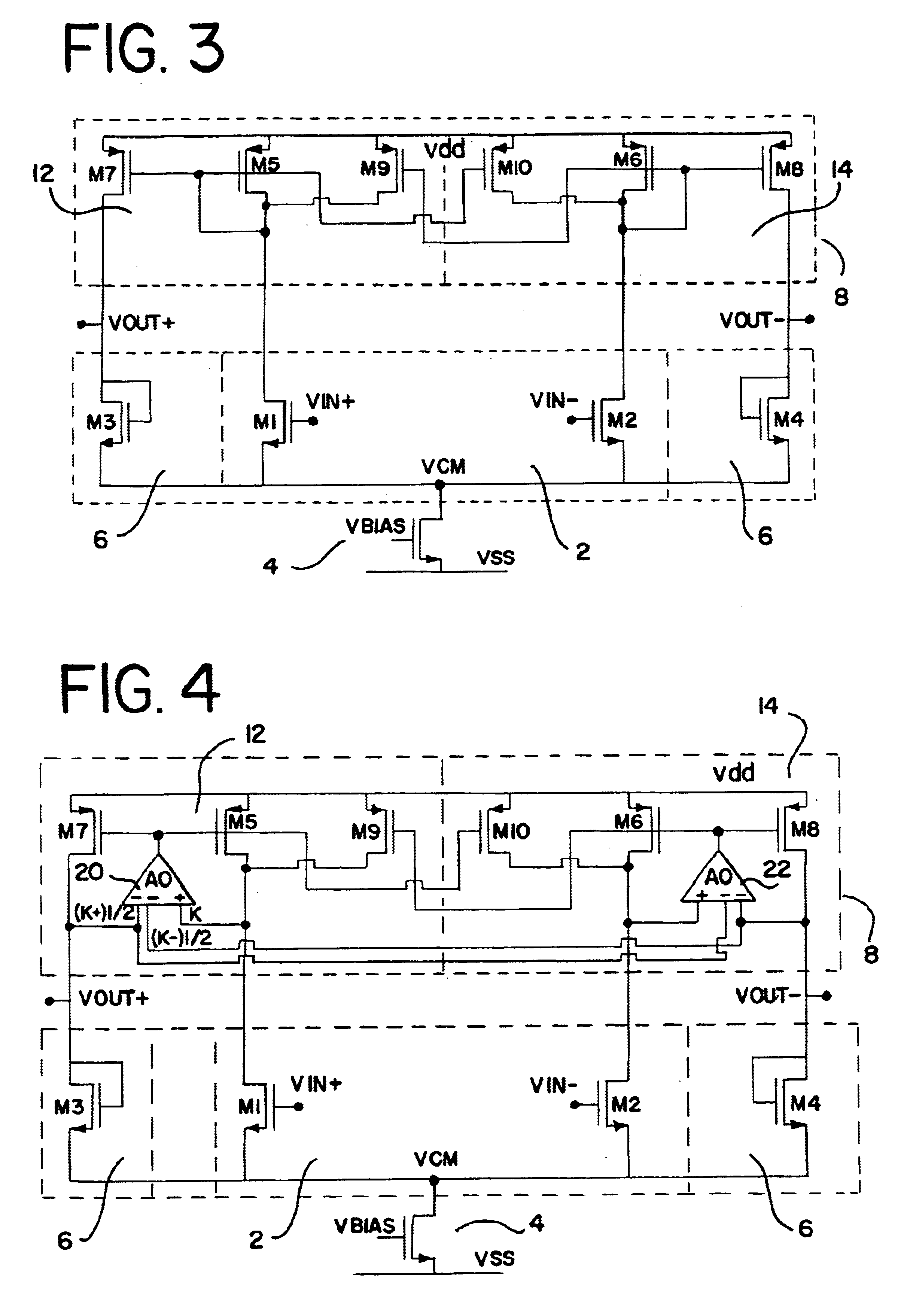Differential amplifier with gain substantially independent of temperature
a technology of gain and amplifier, applied in amplifiers, amplifiers with semiconductor devices/discharge tubes, electrical devices, etc., can solve problems such as low output voltage of common mode, large chip area for integration onto a single chip, and limited gain by resistor ratio
- Summary
- Abstract
- Description
- Claims
- Application Information
AI Technical Summary
Benefits of technology
Problems solved by technology
Method used
Image
Examples
first embodiment
the present invention is shown schematically in FIG. 2. It is a fully differential amplifier and comprises an input branch 2 comprising a differential and common mode input of, for instance, a matched pair of transistors M1 and M2 of a first conductivity type, e.g. NMOS, with one of their main current electrodes connected together, e.g. their sources. The output branch 6 comprises a second differential and common mode device comprising two matched transistors M3 and M4 having the first conductivity type, e.g. NMOS, and being diode connected, for example, the gate and drain electrodes connected together. The one main current electrodes of transistors M3 and M4 are connected to the one main current electrodes of the input pair M1 and M2 so that these all lie on the same potential. This one common electrode, e.g. source, is connected to a voltage or current source 4 depending on the application and the required performance. The one common electrode for M1 to M4 avoids the need of a sep...
PUM
 Login to View More
Login to View More Abstract
Description
Claims
Application Information
 Login to View More
Login to View More - R&D
- Intellectual Property
- Life Sciences
- Materials
- Tech Scout
- Unparalleled Data Quality
- Higher Quality Content
- 60% Fewer Hallucinations
Browse by: Latest US Patents, China's latest patents, Technical Efficacy Thesaurus, Application Domain, Technology Topic, Popular Technical Reports.
© 2025 PatSnap. All rights reserved.Legal|Privacy policy|Modern Slavery Act Transparency Statement|Sitemap|About US| Contact US: help@patsnap.com



